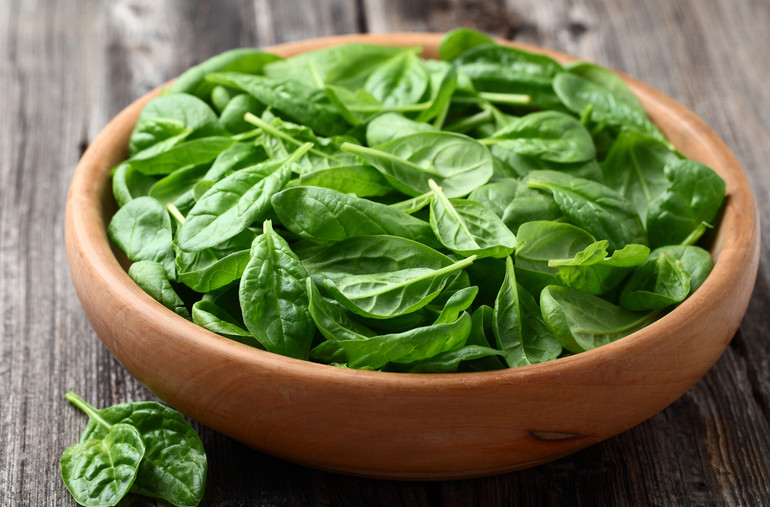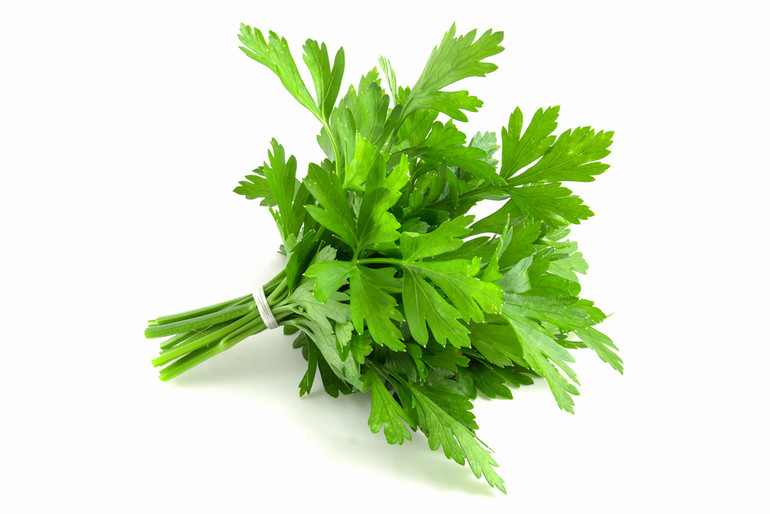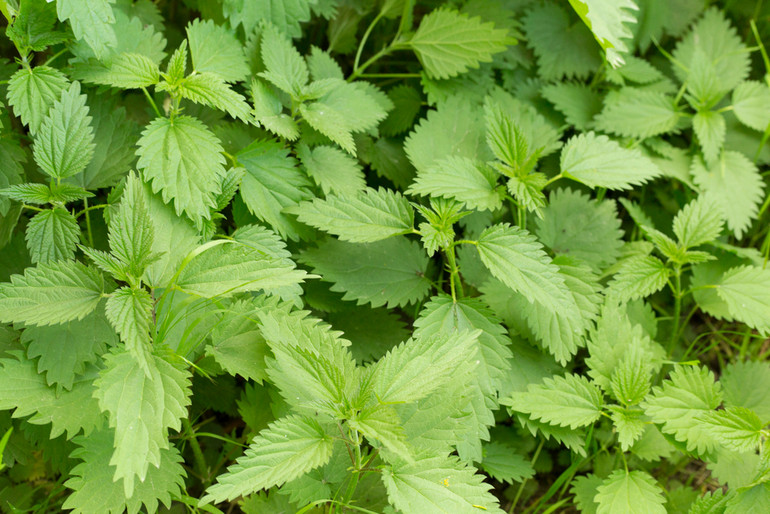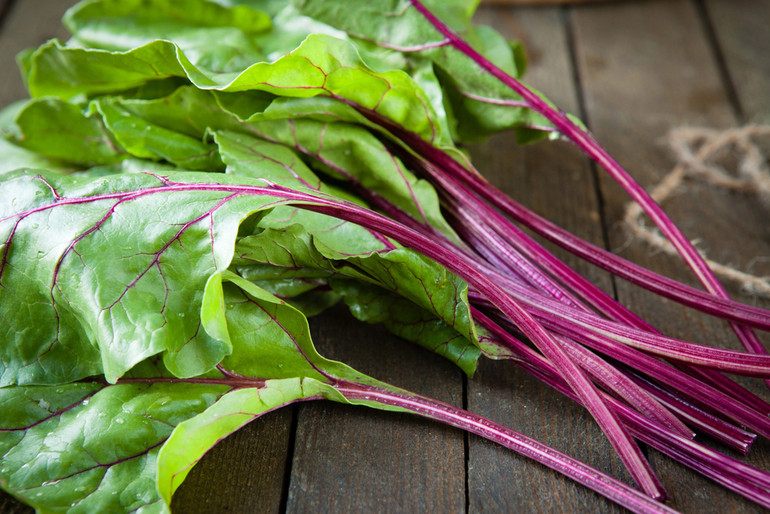spinach, cilantro, sorrel, beetroot and parsley

The period when fresh herbs are actively entered in our diet.
Greens are very useful for the body, but there are some nuances that need to be taken into account before use.
First of all, greens are known for a high content of folic acid and magnesium, which is part of the chlorophyll pigment molecule and causes green of vegetables. In addition, greens contain high doses of vitamin C, beta-carotene and fiber.
« Up. Life » used sources Webmd, Healthline and National Library of MedicineTo tell the benefit of the greens and why it should be added to the diet.
Spinach
Spinach is great source Many vitamins and minerals:
Spinach is rich in carotenoids that your body can turn into vitamin A.
This vitamin is a powerful antioxidant that promotes skin health and maintains immune function.
This vitamin is needed for blood clotting. It is worth noting that one leaf of spinach contains more than half of the daily rate.
- folic acid
It is also known as a folate or vitamin B9, this compound is extremely important for pregnant women, as well as necessary for the normal functioning of cells and tissue growth.
Spinach is a great source of this vital mineral. Iron helps to form a hemoglobin that transports oxygen to the body’s tissues.
This mineral is necessary for the health of the bones and performs an important signaling function in the nervous system, heart and muscles.
Interesting is that iron spinach It has low bioavailability – that is, poorly absorbed by the body.
To increase the bioavailability of iron and other trace elements:
- Cook the spinach, not eat raw.
- Add something sour to it, it increases the bioavailability of iron.
- Add fats to the dishes.
- Eat spinach with calcium -containing foods.
Daily You can eat up to 150 grams of spinach. But people with certain diseases should limit its use. If you are prone to the formation of kidney stones, the high content of oxalates in spinach can cause their formation.
There is really a lot of iron and pro-vitamin A, as well as potassium, magnesium, vitamin K, thiamine (vitamin B1) and folate.
Dill
Dill is source vitamins A and C, as well as calcium and iron.
In addition, dill has a pronounced aroma. It is often used as a seasoning.
Research showedthat dill can be used to control diabetes. They demonstrate that the plant helps prevent development diabetes Type 2 and control the existing disease.
At the same time, the use of dill and other herbs to taste food can be a good alternative to sweet or treated seasonings.
Dill is rich in flavonoids that help reduce the risk of heart disease. But this is not the only reason why dill is considered beneficial to the heart. Research showthat dill can also reduce low -density lipoproteins (so -called « bad » cholesterol), which has a positive effect on heart health.
You can add one teaspoon of dill per serving to the dishes. As a seasoning, this greens have a strong effect, so it is safe to start with a small pinch and add more as needed.
Parsley
Exists Two types Fresh parsley, which can often be found in markets and in grocery stores. They are usually called in appearance: curly and flat -leaved.
Curly parsley (French) is often used as a decoration for dishes.
Flat parsley, also known as Italian, has a more saturated taste and is used as an ingredient in salads and cooked dishes.
Parsley contains many vitamins, minerals and antioxidants that can provide health benefits. It is a particularly rich source of vitamin K. Only one tablespoon of fresh crushed parsley provides more than 70% of the recommended daily rate. This vitamin promotes bone growth and increased mineral density.
Parsley also contains a large number Vitamin A, which helps protect the surface of the eye, as well as lutein and zeaxanthin – two antioxidants that prevent age -related impaired eye health.
At the same time, parsley is a powerful natural diuretic and can help reduce bloating and reduce blood pressure.
It is best to use 30 grams of parsley a day. Use Very big The number of parsley (for example, 200 grams) is dangerous. Serious side effects can occur: kidney, liver and hallucinations.

Parsley contains many vitamins, minerals and antioxidants that can provide health benefits.
Sorrel (kvastok)
Sorrel is wonderful source antioxidants –Useful Compounds that protect cells from damage, neutralizing harmful free radicals.
Antioxidants can help prevent the development of many chronic diseases, including cardiovascular and diabetes.
Animal study testifythat sorrel can improve heart health. They showed that sorrel extract can expand blood vessels, which helps prevent high blood pressure.
It is also worth noting that sorrel contains oxalates – common plant compounds that can block mineral absorption such as calcium.
Calcium and oxalates can bind to each other, which promotes the formation of kidney stones. These solid mineral deposits can cause pain, nausea and vomiting.
However, instead of the complete exclusion of oxalates rich in products (such as sorrel), it is better to increase calcium intake, reduce salt intake and drink a lot of water from your diet-it will help prevent the formation of kidney stones.
People without kidney disease can consume 30-50 grams of sorrel per day.
Nettle is rich in fiber, protein, antioxidants, vitamins and minerals (potassium, calcium, zinc, iron, magnesium, phosphorus, etc.).
Early nettle is especially useful because of the high concentrations of vitamins A, C, D, E, F, K and P, vitamins B.
In the letter of fresh nettle is carotenoidsinvolved in the synthesis of immunoglobulins have Antioxidant and anti -inflammatory properties and help to work vitamin A necessary for the health of the eyes.
Nettle sting through formic acid The plant, but heat treatment helps to get rid of « burning ».
It is safe to eat dried or cooked nettle for most people. It is worth starting with a small amount of product to determine whether you have allergic reactions to nettle. However, you should not eat fresh leaves as it can cause irritation.

From nettle can be made of herbat, green borsch, Phali (Georgian dishes made of ground nuts, green and Swan salt), or add to rice.
Kinza (Coriander)
Coriander is source Vitamin C, calcium, magnesium, potassium and iron.
Coriander leaves and seeds are rich in vitamin K, which plays an important role in the blood clotting process.
Cinesis contains many antioxidants that help fight free radicals in the body and protect cells from damage.
Coriander has several properties that have a positive effect on heart health. It is a diuretic – it helps to remove excess sodium from the body, reducing blood pressure.
At the same time, coriander can reduce the level of « bad » LDL cholesterol, reducing the risk of atherosclerosis.
NCoriander’s ashes can reduce blood sugar, which can be useful for people with diabetes.
You can add about 25-35 grams of cilantro to the dishes.

Kinza has an effect on potassium channels in the brain and reduction of convulsions.
Rhubarb (rumbambar)
Rhubar is a great source of vitamin K – an important element for bone health and blood clotting.
Vitamin A, also contained in Revene, helps fight free radicals that cause skin damage and premature aging, keeping it healthy and young.
Rhubarb is an excellent source of fiber that helps to reduce cholesterol. Studies show that rhubarb reduces the level of « bad » LDL cholesterol as well as the total cholesterol.
Reduction of cholesterol reduces the risk of cardiovascular disease and heart attack. Antioxidants contained in Rumbambari have an anti -inflammatory effect, which also contributes to the health of the heart.
Cellulose in Revene promotes regular work of the digestive tract, preventing problems such as constipation.
Rhubarb is especially rich in anthocyanins (pigments that give it red). These compounds have antibacterial and anti -inflammatory properties.
The rhubarb leaves should not be eaten – it has too much oxalic acid, and it can be dangerous.
You can add a stem that holds the leaves.

There is a lot of fiber in Revenue, so it benefits the intestinal microflora, intestinal motility and helps keep cholesterol normal.
Beet
Beets contain many useful plant compounds that reduce inflammation and protect cells from damage.
The plant and its juice help the heart and lungs to work more effectively during exercise. Nitric acid from beet improves blood circulation in the muscles.
Beetroot is rich in folate, vitamin that helps cells grow and function. Folic acid plays an important role in protecting blood vessels, reducing the risk of cardiovascular disease and stroke.
At the same time, beets contain potassium, which helps the health of the heart and is naturally rich in nitrates, which in the body turn into nitric oxide. This substance helps to relax and expand blood vessels, which helps to reduce blood pressure.
The plant has a lot of fiber and promotes beneficial bacteria in the intestine. Cellulose also improves digestion and reduces the risk of constipation.

Beets and mangold contain a lot of vitamin K, magnesium, alpha-lipoic acid, food nitrates, and is considered an assistance component of diet in the case of diabetes, osteoporosis or training.
Beetroot leaves can be eaten raw or stewed.
You can eat 100-200 grams of beets daily.
It is not necessary to abuse the greens, but to try to add it to your diet in the permitted amount.





:format(jpeg):fill(f8f8f8,true)/s3/static.nrc.nl/taxonomy/061fd2f-Rusman%252C%2520Floor%25202023%2520%255BDoomernik%25202320%255D%25201280%2520WEB.png)



